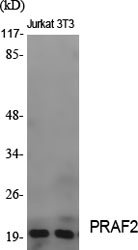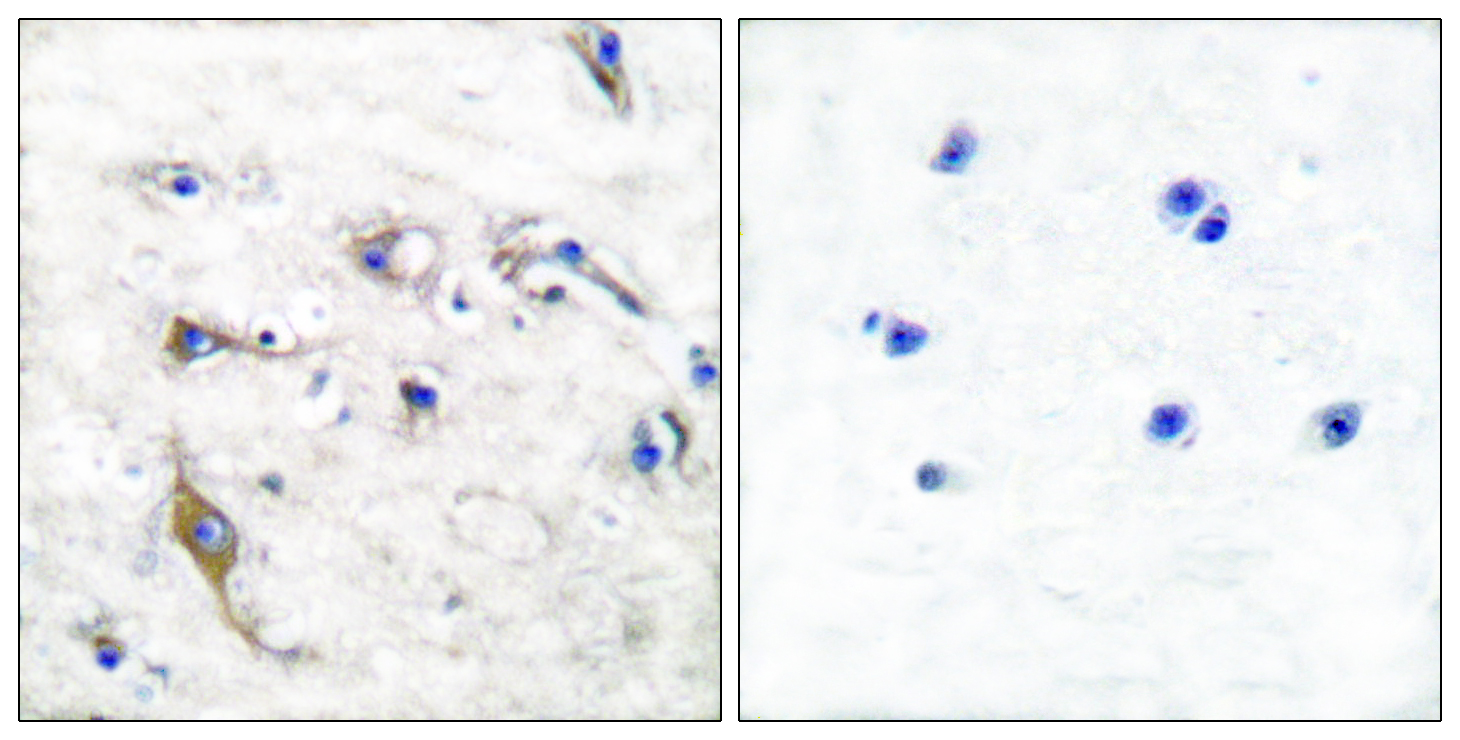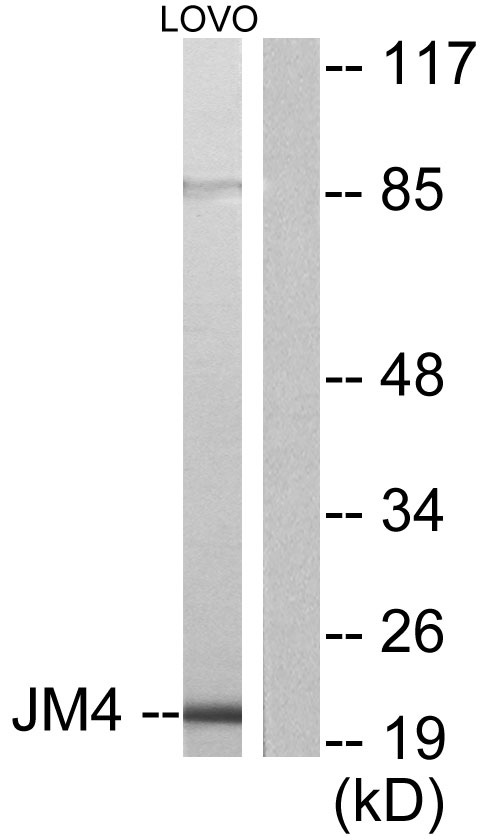PRAF2 Polyclonal Antibody
- Catalog No.:YT3847
- Applications:WB;IHC;IF;ELISA
- Reactivity:Human;Mouse;Rat
- Target:
- PRAF2
- Gene Name:
- PRAF2
- Protein Name:
- PRA1 family protein 2
- Human Gene Id:
- 11230
- Human Swiss Prot No:
- O60831
- Mouse Gene Id:
- 54637
- Mouse Swiss Prot No:
- Q9JIG8
- Immunogen:
- The antiserum was produced against synthesized peptide derived from human JM4. AA range:129-178
- Specificity:
- PRAF2 Polyclonal Antibody detects endogenous levels of PRAF2 protein.
- Formulation:
- Liquid in PBS containing 50% glycerol, 0.5% BSA and 0.02% sodium azide.
- Source:
- Polyclonal, Rabbit,IgG
- Dilution:
- WB 1:500 - 1:2000. IHC 1:100 - 1:300. IF 1:200 - 1:1000. ELISA: 1:40000. Not yet tested in other applications.
- Purification:
- The antibody was affinity-purified from rabbit antiserum by affinity-chromatography using epitope-specific immunogen.
- Concentration:
- 1 mg/ml
- Storage Stability:
- -15°C to -25°C/1 year(Do not lower than -25°C)
- Other Name:
- PRAF2;JM4;PRA1 family protein 2
- Observed Band(KD):
- 20kD
- Background:
- function:May be involved in ER/Golgi transport and vesicular traffic. Plays a proapoptic role in cerulenin-induced neuroblastoma apoptosis.,similarity:Belongs to the PRA1 family.,subunit:Interacts with CCR5 and GDE1.,tissue specificity:Strong expression in the brain, small intestine, lung, spleen, and pancreas as well as in tumor tissues of the breast, colon, lung and ovary, with a weaker expression in normal tissues of the same patient. High expression in neuroblastic tumors. Strongly expressed in Purkinje cells and more moderately in cells of the molecular and the granular layers in the cerebellum. Detected in neuronal cells, but not in non-neuronal cells in the cerebral cortex, hippocampus, and lateral ventricles.,
- Function:
- function:May be involved in ER/Golgi transport and vesicular traffic. Plays a proapoptic role in cerulenin-induced neuroblastoma apoptosis.,similarity:Belongs to the PRA1 family.,subunit:Interacts with CCR5 and GDE1.,tissue specificity:Strong expression in the brain, small intestine, lung, spleen, and pancreas as well as in tumor tissues of the breast, colon, lung and ovary, with a weaker expression in normal tissues of the same patient. High expression in neuroblastic tumors. Strongly expressed in Purkinje cells and more moderately in cells of the molecular and the granular layers in the cerebellum. Detected in neuronal cells, but not in non-neuronal cells in the cerebral cortex, hippocampus, and lateral ventricles.,
- Subcellular Location:
- Endosome membrane ; Multi-pass membrane protein .
- Expression:
- Strong expression in the brain, small intestine, lung, spleen, and pancreas as well as in tumor tissues of the breast, colon, lung and ovary, with a weaker expression in normal tissues of the same patient. High expression in neuroblastic tumors. Strongly expressed in Purkinje cells and more moderately in cells of the molecular and the granular layers in the cerebellum. Detected in neuronal cells, but not in non-neuronal cells in the cerebral cortex, hippocampus, and lateral ventricles.
- June 19-2018
- WESTERN IMMUNOBLOTTING PROTOCOL
- June 19-2018
- IMMUNOHISTOCHEMISTRY-PARAFFIN PROTOCOL
- June 19-2018
- IMMUNOFLUORESCENCE PROTOCOL
- September 08-2020
- FLOW-CYTOMEYRT-PROTOCOL
- May 20-2022
- Cell-Based ELISA│解您多样本WB检测之困扰
- July 13-2018
- CELL-BASED-ELISA-PROTOCOL-FOR-ACETYL-PROTEIN
- July 13-2018
- CELL-BASED-ELISA-PROTOCOL-FOR-PHOSPHO-PROTEIN
- July 13-2018
- Antibody-FAQs
- Products Images

- Western Blot analysis of various cells using PRAF2 Polyclonal Antibody diluted at 1:2000
.jpg)
- Western Blot analysis of RAT-HEART cells using PRAF2 Polyclonal Antibody diluted at 1:2000

- Immunohistochemistry analysis of paraffin-embedded human brain tissue, using JM4 Antibody. The picture on the right is blocked with the synthesized peptide.

- Western blot analysis of lysates from LOVO cells, using JM4 Antibody. The lane on the right is blocked with the synthesized peptide.


